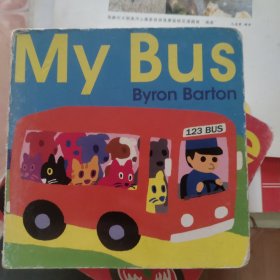
【预订】By My Hands
书籍内容简介可联系客服查阅,查书找书开票同样可以联系客服
¥ 238 ¥ 238 九五品
库存2件
作者Florian Gadsby
出版社Clarkson Potter/Ten Speed
ISBN9781984863584
出版时间2023-11
装帧精装
定价238元
货号YB-91415
上书时间2024-08-09
- 最新上架
商品详情
- 品相描述:九五品
- 商品描述
-
商品简介
The internet’s favorite potter opens up about his life and craft in this inspiring, stunningly photographed ode to the beauty of small things that brighten life's daily rituals.
Florian Gadsby has devoted his life to pottery, refining his technique towards the point of perfection—and as his skill has grown, he has shared his work online, inspiring millions with his meditative videos of gorgeous pottery. Based at a studio in North London, he releases three new collections per year, characterized by simple forms and sharp edges, which sell out in a matter of minutes.
In By My Hands, Florian tells the story of his artistic awakening, his education in England, Ireland and Japan, and the sheer discipline which has led him to become the cultural sensation he is today. Arguing for the value in dedicating yourself to a craft, Florian weaves anecdotes about particular pots and processes into the narrative of his life. He explores what he has learned from specific pieces he was taught to create during his apprenticeships—including yunomi, a Japanese teacup, in Mashiko, Japan—and how they have informed his philosophy and approach to his work.
By My Hands is a thoughtful, visual celebration of the simple things, such as a hand-thrown mug or bowl, that add meaning to our lives, as well as an inspiring testament to the power of perseverance.
互联网上最受喜爱的陶艺家在这部鼓舞人心、照片精美的颂歌中讲述了他的生活和手艺,歌颂了照亮生活日常仪式的小事物的美丽。
弗洛里安·盖茨比 (Florian Gadsby) 奉献了他的一生他将生活融入陶艺,将他的技术精益求精,直至完美—随着他的技术不断进步,他在网上分享了他的作品,用他的华丽陶艺冥想视频激励了数百万人。他以北伦敦的工作室为基地,每年发布三个新系列,其特点是简单的形式和锋利的边缘,几分钟内就卖光了。
By My Hands弗洛里安讲述了他的艺术觉醒、他在英国、爱尔兰和日本接受的教育,以及使他成为当今文化轰动人物的严格纪律的故事。弗洛里安(Florian)主张奉献自己于手工艺的价值,他将有关特定陶器和工艺的轶事编织到他的生活叙述中。他探讨了他从学徒期间被教导创作的具体作品中学到的东西——包括日本益子的日本茶杯 yunomi——以及它们如何影响他的哲学和工作方法。
< i>By My Hands 是对简单事物的深思熟虑和视觉庆祝,例如手扔的杯子或碗,它们为我们的生活增添了意义,也是对毅力力量的鼓舞人心的证明。
作者简介
Florian Gadsby is a ceramicist currently working in High Barnet, North London. He produces ranges of reduction-fired functional pottery and sculptural objects that are refined, simple, and carefully crafted. Alongside his physical work, Florian has long been documenting his pottery and apprenticeships online. He has more than two million followers across various platforms that have accumulated hundreds of millions of views on Instagram, YouTube and TikTok.
精彩内容
Where I Discover Clay
I sometimes feel as if my life didn’t really begin until I started throwing pots. Until the age of sixteen I more or less lived online, peering into a virtual world. After arriving home from school, one that was so focused on craft, community and, often, spirituality, I would come in and switch on a screen to forget reality. My hands were moulded around a lump of plastic, a video-game controller, but this was soon to be replaced by a lump of soft, malleable clay.
I was born two months premature, incubated, only a speck in my grandfather’s sturdy hands. We lived in a quiet village in Norfolk called Maypole Green, where hedges, dank ponds and furrowed fields make up a majority of my memories from this time and all I have left are fleeting sounds, smells and stories I’ve been told. Our home was surrounded by what I remember as dense, monolithic hedgerows and we spent our time outside in the garden, running in the neighbouring fields, building dens and climbing branchy, wavering trees. We followed the tails of our cats who lived happily in the abundant greenery, apart from Dotty, a mean, scrawny white cat, spotted black, who would hiss hellfire as soon as we tried to stroke her.
I was six years old when we moved to London in 1998. My father’s commute into the city had become untenable and so we left the green surroundings for residential—and still comparatively green—north London, packing everything into a house on a corner next to Alexandra Park. We were downsizing, and my father still tells the story of how he burnt many of his belongings in a heaped bonfire prior to leaving, both as a means of accommodating his possessions in a smaller home and as an expression of protest, since he really loved the countryside.
My father, Mark, spent decades working in advertising; he was a successful art director and travelled relentlessly, even assisting in introducing McDonald’s to the UK at one point, but his heart was really in making, in craft. Alongside his career he pursued this passion, and throughout his life he has also been, and still is, a woodworker, metalworker and jeweller, and an acclaimed illustrator. He has long blond hair, like me and my brother, a kindly, crooked smile and thick-rimmed spectacles—the resemblance we share is at times uncanny.
My mother, Kate, is a photographer and gardener. As a parent she is carefree and never once questioned the choices I’d make in my life. She’s sharp and keen-eyed, quickly loses her temper and has a vast knowledge of the world, languages and the plants she surrounds herself with. She cared for Anatole and me, photographing gardens whilst we were in school. Tolly, which is what I’ve called my brother since I learnt to speak, is four years older than me. He has my dad’s blue eyes; I have my mum’s freckled brown. He’s left-handed like my dad, I’m right-handed like my mum. We grew up in houses crowded with pots, paintings and sculpture. My father even made pots of his own, the pieces once photographed by my mother, a picture that has come to sum up my life quite succinctly.
The new house was in a leafy part of the city, in an area built up with rows upon rows of houses running up and down the surrounding hills. It was all new to me, with vistas limited by buildings wherever I looked. As we first drove into London on the dreaded moving day we stopped on the side of the motorway, the skyline glinting in the distance, and I followed the ever-dwindling, glowing streetlights along the twisting road as they disappeared into the skyscrapers on the Isle of Dogs. That was in August, a few days before my birthday, and just a few days later I started at my new school in Kings Langley, which was a Waldorf Steiner school. In 1919, a year after the Great War ended, the educator and spiritualist Rudolf Steiner visited Waldorf-Astoria-Zigarettenfabrik, a cigarette factory in Germany. Emil Molt, the owner of the factory, asked Steiner if he’d like to set up a school for the workers’ children—the doors opened later that year and the first Waldorf Steiner school was established. The curriculum was based on Steiner’s anthroposophical philosophy (which encompassed the arts, architecture, agriculture and medicine) alongside the more traditionally academic school subjects. Anthroposophy is a way of life, a spiritual movement even, which claims to link the arts, the sciences and religion, aiming to nurture the soul in each of us and in human society as a whole. Steiner thought that we, as humans, were fashioned from spirit, soul and body, and that these developed throughout childhood and into adolescence.
I went into this education at six years old and found myself in a system that I adored, but which also contained some highly dubious ideas, embracing a multitude of pseudosciences – if you look far enough back, you’ll discover that Steiner himself had some rather frightening ideas concerning race and ethnicity. During all my time at Kings Langley, though, I can count on one hand the number of times we were taught anything actually anthroposophical. Steiner’s philosophies may have created the underlying infrastructure for how these schools are run, and many of his ideas remain, but many others have become outdated over the past century and aren’t taught – or, at least, they never were to us.
My parents decided that my brother and I would go there after visiting the school with friends to pick up their kids. They saw young children playing in lush gardens, where there was an emphasis on exploring and being outside, on playing, on socializing and singing together. The school wasn’t rigorously academic and the teachers they spoke to made it apparent that they wanted to focus on the children simply being themselves. I’ve never been a spiritual person, my family certainly isn’t either and even though we spent singing lessons chanting hymns, we also sang The Beatles and Frank Zappa. For me, singing the Lord’s Prayer had nothing to do with religion; instead, I revelled in the comradeship of being in a choir. Singing together, working well together and functioning as a community is, to me, what this system taught exceedingly well.
The Goetheanum, the building in Switzerland at the centre of this anthroposophical movement, looks quite unlike anything else. The exterior is built entirely from cast concrete that was poured into giant wooden moulds crafted by boat builders, for the obvious reason that they knew how to craft seamless, curvaceous structures. Right angles are few and far between and even if you search you’ll have a hard time finding many, save where the building meets the ground. This is one of Steiner’s philosophies: he thought that buildings should follow the human form, avoiding straight lines and harsh angles and, instead, embracing rounded edges, curves and billowing shapes.
The inside follows suit, but instead of cold concrete it is clad with warm wooden floors and furniture, the walls are painted with shades of soft primary colours with ethereal, angelic figures materializing from the contours of the brushwork, and there is colourful stained glass that bathes the curved rooms in swathes of beautiful light. Steiner believed that colour and human souls were intimately connected, which they might be, but he al
相关推荐
-

【预订】By My Hands
九五品成都
¥ 238.00
-

【预订】My Sweet Girl
九五品成都
¥ 118.00
-

【预订】My Sweet Girl
九五品广州
¥ 118.00
-

【预订】My Sweet Girl
九五品济南
¥ 118.00
-

【预订】My Sweet Girl
九五品广州
¥ 118.00
-

【预订】My Sweet Girl
九五品广州
¥ 118.00
-

traditional chinese medicine by Yan Han
八五品衡水
¥ 5.60
-

【预订】My Bus Board Book
九品菏泽
¥ 46.00
-

【预订】My Passion for Design
九五品成都
¥ 528.00
-

【预订】My Name Is Barbra
九五品成都
¥ 278.00
— 没有更多了 —












以下为对购买帮助不大的评价